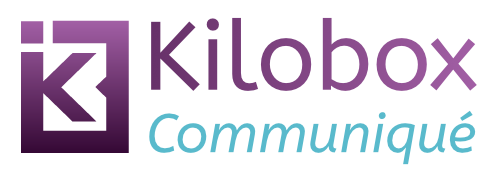There has been a massive shift from broadcast communication to participatory communication and co-creation within internal communications. Often supported by better digital tools and social intranet systems, the internal comms team has been able to join conversations rather than always (on the surface) start them.
This transition isn’t and cannot be complete within every organisation; many working environments remain top-down for cultural and procedural reasons, and many people prefer management cascades and conversations with their direct manager. The revolution may have started, but not everyone cares.
With this in mind, along with my interest in Organisation Development, I attended the inaugural #ResponsiveOrg unconference in London to learn more about organisation transformation.
What it all means
The Responsive Organization is built to learn and respond rapidly by optimizing for the open flow of information; encouraging experimentation and learning on rapid cycles; and organizing as a network of employees, customers, and partners motivated by shared purpose.
The Shift
A number of fundamental shifts in corporate structures and information systems are required to take advantage of the increased speed of information.
- From
- Efficiency
- Hierarchies
- Controlling
- Extrinsic Rewards
- Office & Office Hours
- Customers & Partners
- To
- Responsiveness
- Networks
- Empowering
- Intrinsic Motivation
- Anywhere & Anytime
- Community
These trends…
- Mean
- Participation
- Decentralized networks
- Transparency
- Anywhere & Anytime
- Experimentation, some failures are okay
- Decreasing cycle time
- Adaptability
- Empowerment
- Intrinsic motivation
- Do not mean
- Consensus
- Flat
- Nothing is private
- No value in in-person / Slacking at home
- Completely unpredictable results
- Lack of long term point of view
- Lack of Direction
- Lack of Leadership
- Ignoring business objectives
Quoted from the Responsive Organization Manifesto.
My takeaways from the day
The unconference was well run. I had to get myself into the right frame of mind to participate in group conversations.
Ignore the red dots
It might be said that when confronted with change, such as the adoption of social communications within an organisation, that some people are early adopters, some need convincing, and some reject the whole shebang. These skeptics have been designated ‘red dots’ and the early adopters ‘green dots’. The key advice was to focus on the ‘orange dots’ – the people who need convincing with use-cases and concrete examples.
Red, orange, green dots — it’s the traffic light party of social business and change readiness, with focus on orange. #ResponsiveOrg
— Wedge (@Wedge) May 10, 2014
Create a movement, not another procedure
Mandating new ways of working might work in some organisations, but adoption can be encouraged by leading by example, and having a ‘significant second’ join you. Leadership is only half the story – every leader is supported by the first person to recognise the value in the leadership. The first participant is actually a couragious leader – even more important than the original.
Embed new ways of working with examples of what can be done and achieved, rather than policies of what people must not do.
#ResponsiveOrg is a movement rather than a marketing campaign by Microsoft. #ResponsiveOrg is about individual Yammer employees working to support other people’s ideas – no branding, no large amounts of cash. Just good people helping other people talk about new ways of working. I actually didn’t know it was MS and Yammer – the website and hashtag ‘worked’ on me. I didn’t feel duped because the Yammer people spoke to me as an individual, not a prospect.
Networking is hard – thank the gods for Twitter and beer
I didn’t know who would be at this unconference, on a Saturday. I couldn’t expect fellow intranet people, but I hoped to see some communicators and I was thrilled to find Rachel Allen, Gloria Lombardi, Martin Risgaard, and Benjamin Ellis in attendance. Knowing them from other events (Like Minds, SMILE etc.) and from Twitter really helped me talk to other people.
I was thrilled to meet Alan Oram and Adi Gaskell who I’d only just started talking with online. As the day progressed, I also met Kate Jones, Steven Murgatroyd, Melle James, Isabel Collins, Juliet Vorster, Matthew Partovi, Philip Sheldrake, and Charles Fenoughty. Was very pleased to have one or two drinks with one or two exceptional people.
Go further
- The Responsive Organization – guidea and tools
- #ResponsiveOrg
- Storify 1
- Storify 2
- Benjamin’s photos from the day
- Holocracy
- Open Space Technology
- Unconference description
- Failure is a good thing, by Rachel Miller
- Building a new way of working, by Gloria Lombardi
- The Future of Organization, by Philip Sheldrake
- The changing nature of the workplace, by Charles Fenoughty
- Future organisations, by Benjamin Ellis
@IsabelRY: Activist-Embroidery on chair-backs at @hubwestminster #ResponsiveOrg Witty protest, everything’s a canvas pic.twitter.com/kanYtGXoin — Isabel Collins (@IsabelRY) May 10, 2014
[ Wedge ]
Please help me launch a new intranet un/conference in the UK.
If you’d like to share or tweet this article, try:
Tweet: Responding to #ResponsiveOrg – a round-up: http://ctt.ec/BC2H5+ – by @Wedge








Hi Wedge. Great synopsis; really useful. Was really good to meet you. Will stay connected! Melle